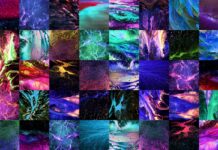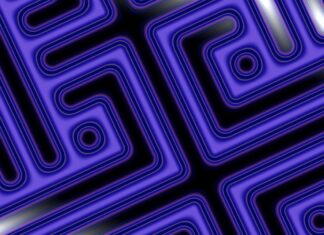Qiskit is an open-source software development framework that enables researchers and developers to work with quantum computers. It is one of the most widely used quantum programming platforms, offering a rich set of tools and libraries for quantum circuit design, simulation, and execution on various quantum devices. Developed by IBM Quantum, Qiskit allows users to explore the exciting world of quantum computing and build applications that harness the power of quantum systems.
Qiskit provides a comprehensive suite of tools and libraries that cater to different aspects of quantum computing. It consists of four main elements: Terra, Aer, Ignis, and Aqua. Qiskit Terra is the foundation of the framework, providing the necessary building blocks for creating quantum circuits and executing them on different backends. Aer is the high-performance simulator backend that allows users to simulate quantum circuits and algorithms efficiently. Ignis focuses on quantum noise and error mitigation, providing tools to characterize and mitigate errors in quantum systems. Finally, Qiskit Aqua is a domain-specific library that offers high-level abstractions and algorithms for solving complex problems using quantum computing.
Now, let’s dive into the five important things you need to know about Qiskit:
1. Quantum Circuit Design: Qiskit allows users to design and manipulate quantum circuits using a user-friendly Python-based programming interface. It provides a comprehensive set of tools to create quantum circuits, initialize qubits, apply quantum gates, and measure the resulting quantum states. The framework supports a wide range of quantum gates, including the fundamental gates like Pauli-X, Pauli-Y, Pauli-Z, Hadamard, and Toffoli gates, among others. With Qiskit, you can design complex quantum circuits and experiment with different quantum algorithms.
2. Backends and Execution: Qiskit provides a seamless interface to execute quantum circuits on various backends, including real quantum devices and high-performance simulators. IBM Quantum offers a cloud-based quantum computing platform that allows users to access their quantum devices through Qiskit. By using Qiskit’s backends, you can run your quantum circuits on actual quantum hardware and observe the behavior of quantum systems. Additionally, Qiskit Aer provides a range of efficient simulators for running large-scale simulations of quantum circuits, enabling rapid prototyping and algorithm development.
3. Quantum Algorithm Development: Qiskit offers a rich collection of quantum algorithms and high-level abstractions through Qiskit Aqua. This module provides ready-to-use algorithms for applications such as optimization, machine learning, chemistry, and finance. By leveraging Aqua’s algorithms, you can solve complex problems efficiently using quantum computing techniques. Moreover, Qiskit Aqua allows users to develop their own quantum algorithms and customize existing ones to suit specific requirements.
4. Error Mitigation and Noise Characterization: Quantum systems are prone to errors and noise that can degrade the performance of quantum computations. Qiskit Ignis addresses this challenge by providing tools for error mitigation and noise characterization. With Ignis, you can calibrate and characterize the errors in quantum systems, design error mitigation techniques, and improve the accuracy of your quantum computations. This module equips users with the necessary tools to handle the inherent noise and imperfections in current quantum devices.
5. Community and Resources: Qiskit boasts a vibrant and active community of researchers, developers, and enthusiasts. The community actively contributes to the development of Qiskit, sharing knowledge, code, and resources. Qiskit provides extensive documentation, tutorials, and example codes to help users get started with quantum programming. The Qiskit textbook is a valuable resource for learning quantum computing concepts and applying them using Qiskit. Additionally, the Qiskit community organizes hackathons, workshops, and conferences, fostering collaboration and innovation in the quantum computing domain.
Qiskit, an open-source software development framework, empowers researchers and developers to work with quantum computers. Qiskit provides a comprehensive suite of tools and libraries for quantum circuit design, simulation, and execution on various quantum devices. It consists of four main components: Qiskit Terra, Aer, Ignis, and Aqua.
Qiskit Terra serves as the foundation of the framework, offering the necessary building blocks for creating and manipulating quantum circuits. With a user-friendly Python-based programming interface, users can design complex quantum circuits, apply quantum gates, and measure the resulting quantum states. The framework supports a wide range of quantum gates, including fundamental gates such as Pauli-X, Pauli-Y, Pauli-Z, Hadamard, and Toffoli gates, among others. Qiskit Terra enables users to experiment with different quantum algorithms and explore the possibilities of quantum computing.
To execute quantum circuits, Qiskit provides seamless access to various backends. These backends include real quantum devices and high-performance simulators. IBM Quantum’s cloud-based quantum computing platform allows users to access their quantum devices through Qiskit. By utilizing Qiskit’s backends, users can run their quantum circuits on actual quantum hardware and observe the behavior of quantum systems. Additionally, Qiskit Aer offers a suite of efficient simulators for large-scale simulations, facilitating rapid prototyping and algorithm development.
Qiskit Aqua, a domain-specific library within Qiskit, focuses on quantum algorithm development. It offers a rich collection of pre-implemented algorithms and high-level abstractions for applications such as optimization, machine learning, chemistry, and finance. Users can leverage Aqua’s algorithms to efficiently solve complex problems using quantum computing techniques. Moreover, Qiskit Aqua allows users to develop their own custom quantum algorithms and customize existing ones to suit specific requirements, enabling flexibility and innovation in quantum algorithm development.
Quantum systems are susceptible to errors and noise that can affect the performance of quantum computations. Qiskit Ignis addresses this challenge by providing tools for error mitigation and noise characterization. With Ignis, users can calibrate and characterize the errors in quantum systems, design error mitigation techniques, and improve the accuracy of their quantum computations. This module equips users with the necessary tools to handle the inherent noise and imperfections in current quantum devices, making their quantum algorithms more robust and reliable.
Qiskit benefits from a vibrant and active community of researchers, developers, and enthusiasts. The community actively contributes to the development of Qiskit by sharing knowledge, code, and resources. Extensive documentation, tutorials, and example codes are readily available to help users get started with quantum programming using Qiskit. The Qiskit textbook is a valuable resource for learning quantum computing concepts and applying them through Qiskit. Additionally, the Qiskit community organizes hackathons, workshops, and conferences that foster collaboration and innovation in the quantum computing field.
In conclusion, Qiskit is an open-source software development framework that empowers users to explore quantum computing and build applications that harness the power of quantum systems. With its comprehensive tools and libraries for quantum circuit design, simulation, and execution, Qiskit enables users to delve into the world of quantum computing, develop quantum algorithms, mitigate errors, and join a vibrant community of quantum enthusiasts.


















